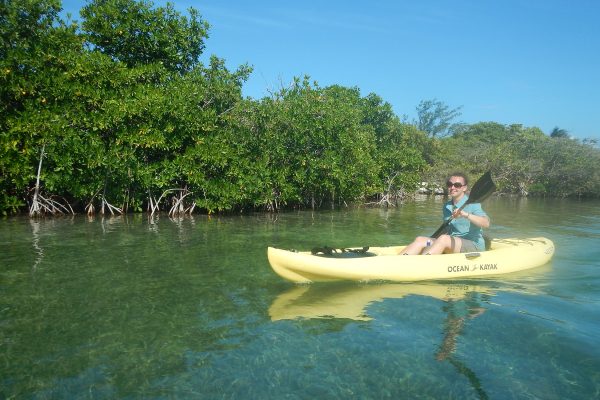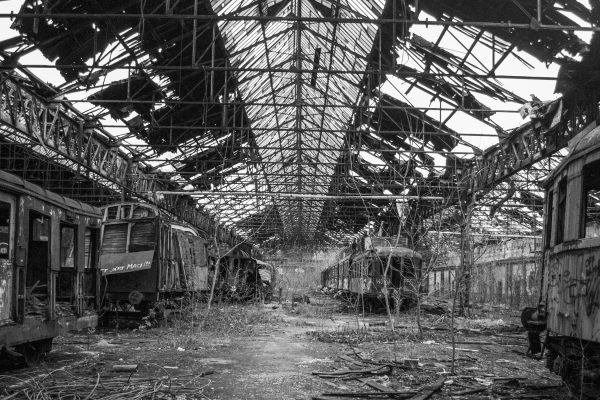Trip duration: 3 days in Kiew with a day trip to Chernobyl | Approx cost: £300| When: Spring
Doinit factor: The most popular destination for any Soviet nut!
Chernobyl, even just the word brings to mind illusions of catastrophic nuclear meltdown, massive mushroom clouds and zombies. Loaded with these illusions I felt it would be a great idea to round up some mates and visit this soviet era time capsule over a long weekend away.
In 1986 reactor 4 of the Chernobyl nuclear facility suffered major meltdown after an experiment failed. However what is often forgotten about are the causalities, human as well as environmental. Officially 35 lives were lost, but the real number of those affected by radiation has never officially been recognised. It’s estimated by various organisations that in reality there have been between 10,000 to 200,000 deaths as a result of the disaster. Our tour starts at 9am in central Keiv in Independent Square, it also starts with quite possibly one of the momentous hangovers I’ve had the misfortune of experiencing. We flew in to Kiev the evening before and it didn’t take long to discover that not only did the city host a good night life, but it’s also quite an affordable one. (ave beer- £1).
Its approximately a two hour bus journey to the 30km exclusion zone, during which an informative documentary is shown. The documentary is also available on youtube:The Battle for Chernobyl. Shortly after the film ends we arrive at the first checkpoint, we’re about to enter the 30 km exclusion zone, well providing the inspection of our passports are satisfactory to the guards. To book this tour you must provide all details to your tour company at least 10 days before visiting. The guards meticulously check our names and passport numbers against their list. Fortunately all is in order and we are allowed to pass. We slowly drive through the town of Chernobyl, the administrative capital for the area. Abandoned buildings overgrown with years of vegetation line the streets. Despite this place looks completely abandoned we’re told by our guide that a few hundred people still live here. These are workers who maintain the area, they are required to spend their time living within the exclusion zone in shifts. 15 days within the zone and 15 days out sides its boundary’s. This is to mitigate any ill effects of possible radiation.
Our bus stops at key points of interest, first of is an outdoor exhibit of some of the vehicles used during efforts to stem the devastation. We’re told they are still very radioactive hence they are cordoned off. Nearby we’re taken to an unofficial monument dedicated to the fire fighters who lost their lives battling the initial blast – unaware of the radioactivity silently killing them. Its unofficial as its was build and paid for by the currently serving fire fighters who patrol the area as a memorial to their comrades. The brigade is currently stationed here to combat real threat of forest fires which could easily create a radioactive smoke cloud.
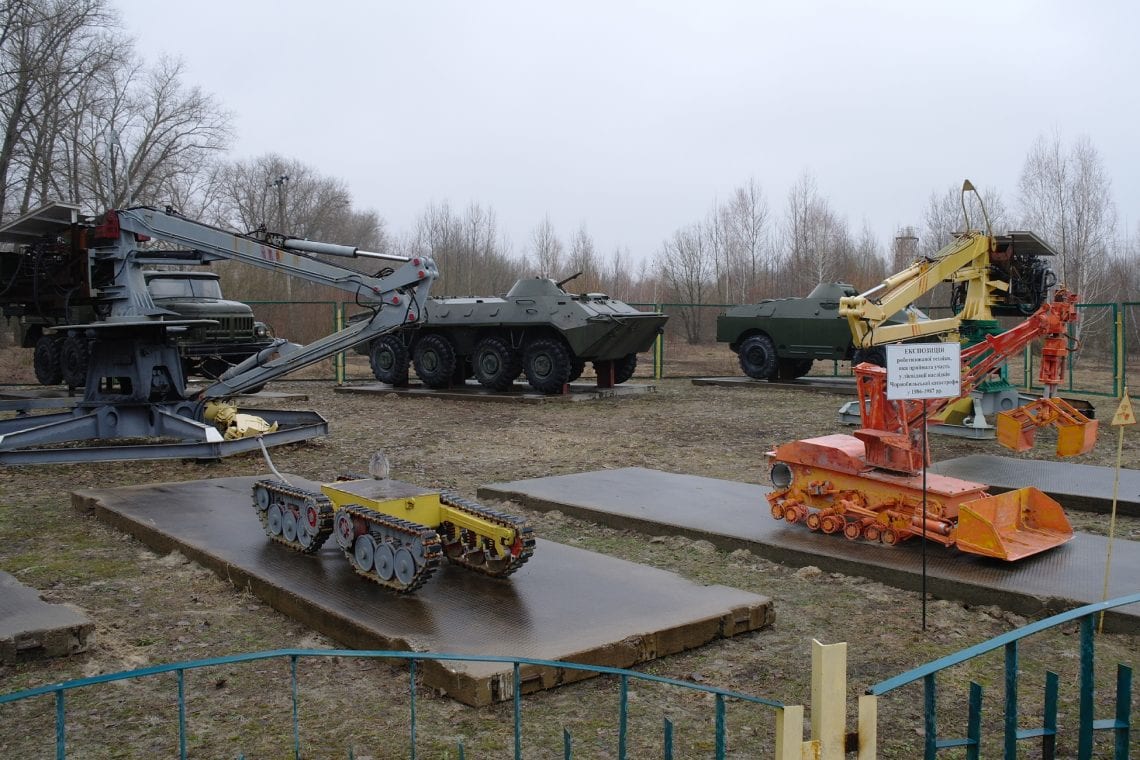
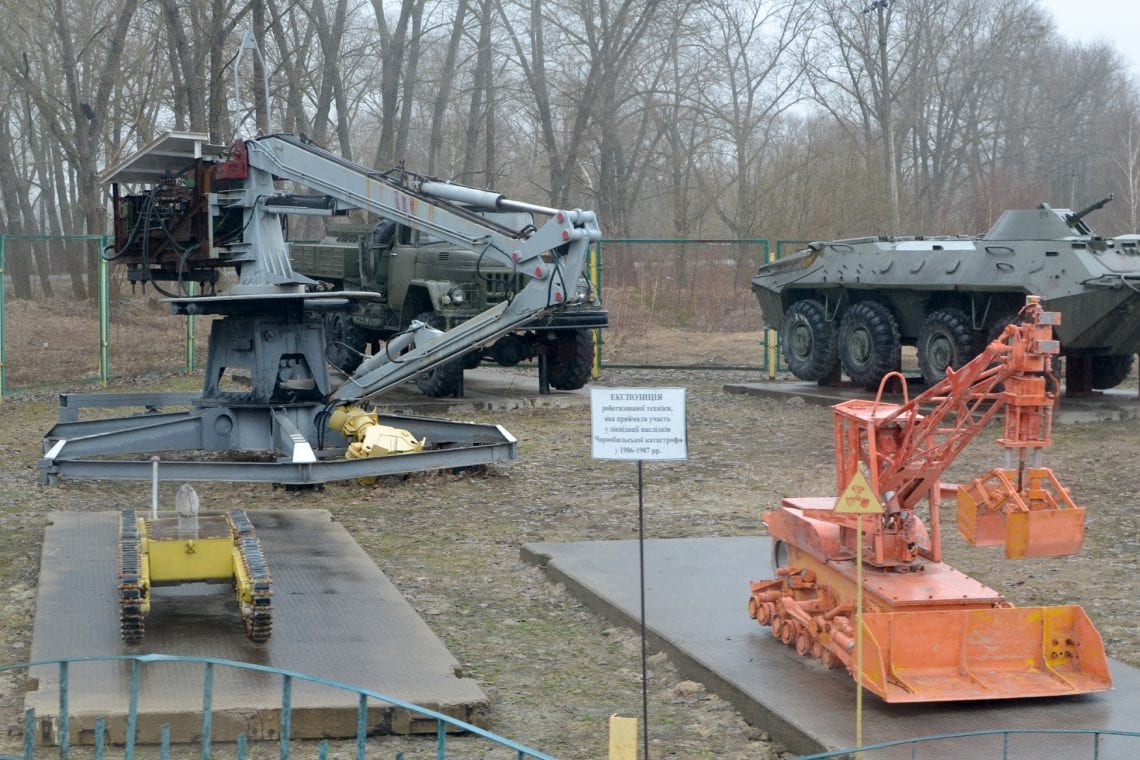
Above: A tribute to the brave fireman who lost their lives in 1986, paid for by current servicemen out of their own pockets | The machines used to during the disaster on display and still radio active
The tour continues to an old school building. It’s one of the very few buildings which visitors are permitted to enter. Due to an incident last year most buildings have now been deemed off limits. It’s a very surreal moment as we enter the school; toys, drawings, and homework are scattered around the floors, books covered with 26 years’ worth of dust and nature ravishing its walls. It’s a 10 minute stop before we’re assured back into our mini bus as we continue on with the tour.

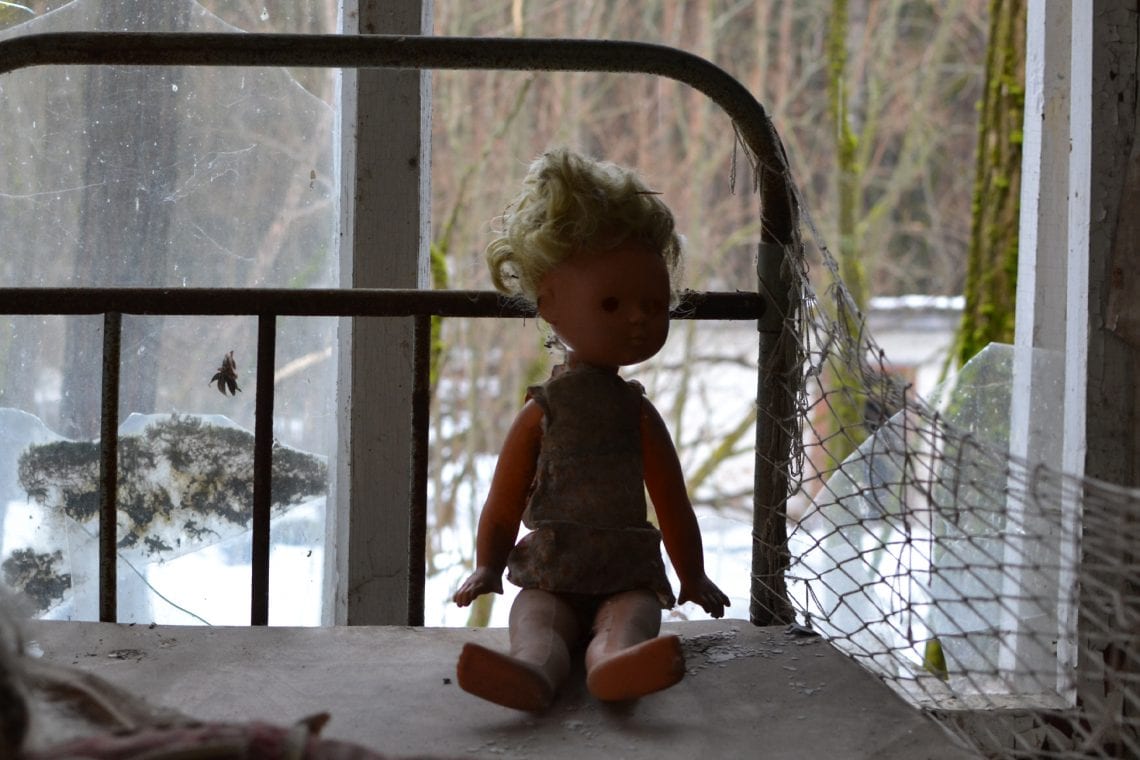
Above: Wondering around an abandoned school
Next on our itinerary is reactor 4 of the Chernobyl nuclear facility. We pass another check point, this is the 10 km exclusion zone. We’re instructed in which direction not to point our cameras, as with any nuclear facility photography is generally prohibited and Chernobyl is no exception. Our route takes us past dead trees and then enormous cooling pools, in the distance we see the reactors and cooling towers.
When we arrive at reactor 4 we’re surprised how close we are allowed to get. We’re about 200 meters from the doomed reactor. In front of the reactor where our group has been dropped of a memorial stands and it is here our minder tells us photographs are permitted – but only in the direction of the reactor. It’s a real sombre moment. This is site of the world’s worst nuclear incident and the possibly the world’s closest near miss nuclear catastrophe. After the initial blast there was a secondary problem. Water used to cool the reactor and to put out the fires had built up in underwater pools below the reactor. The reactor was so hot it had begun to melt through the ground. Should it have made contact there would have been a massive explosion, 10 times larger than that or Hiroshimaone which would obliterated a large part of Europe and spread unimaginable levels of radiation. This was kept secret for over two decades after the disaster. Workers were brought in from around the USSR to struggled around the clock digging under the reactor and lining it with concrete before this could happen. They are the forgotten heroes of Chernobyl.
To our right, where we are not allowed to photograph stands the construction site of the world’s largest movable object – a massive 1 Billion euro sarcophagus designed to seal the nuclear reactor for the next 100 years. It’s only a year or so from completion… if funding doesn’t run out. We fight the urge not to turn our lens towards this structure but of course this is futile, and when our chaperone isn’t looking we subtly snap a few shots.
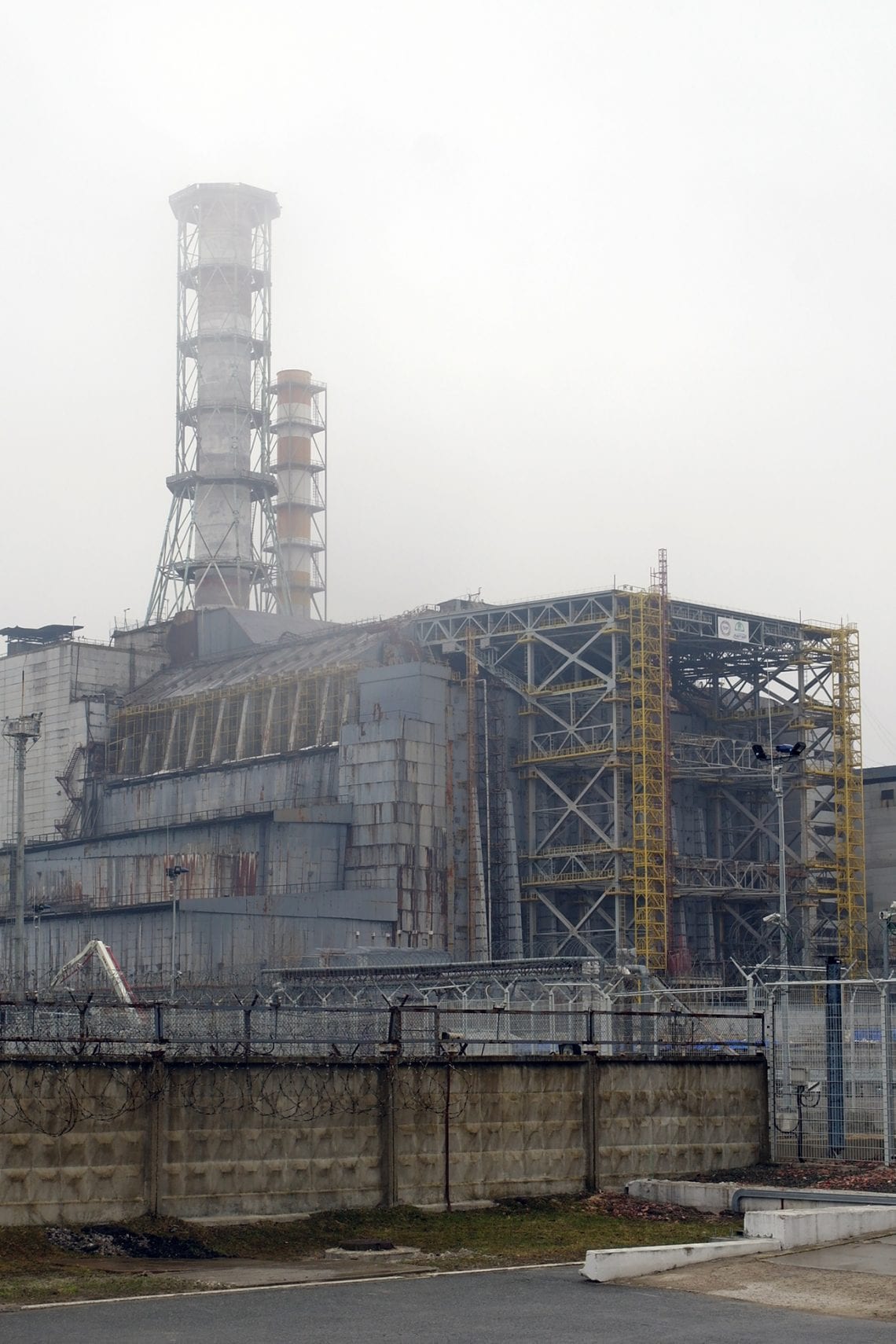
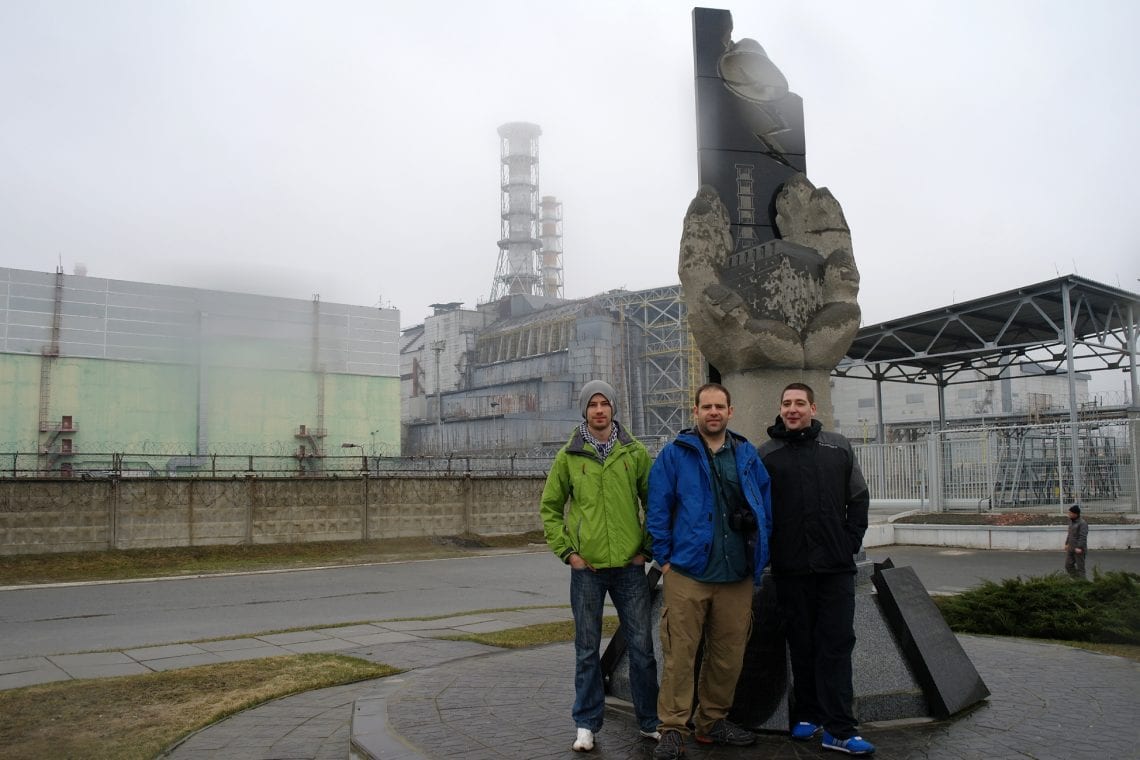
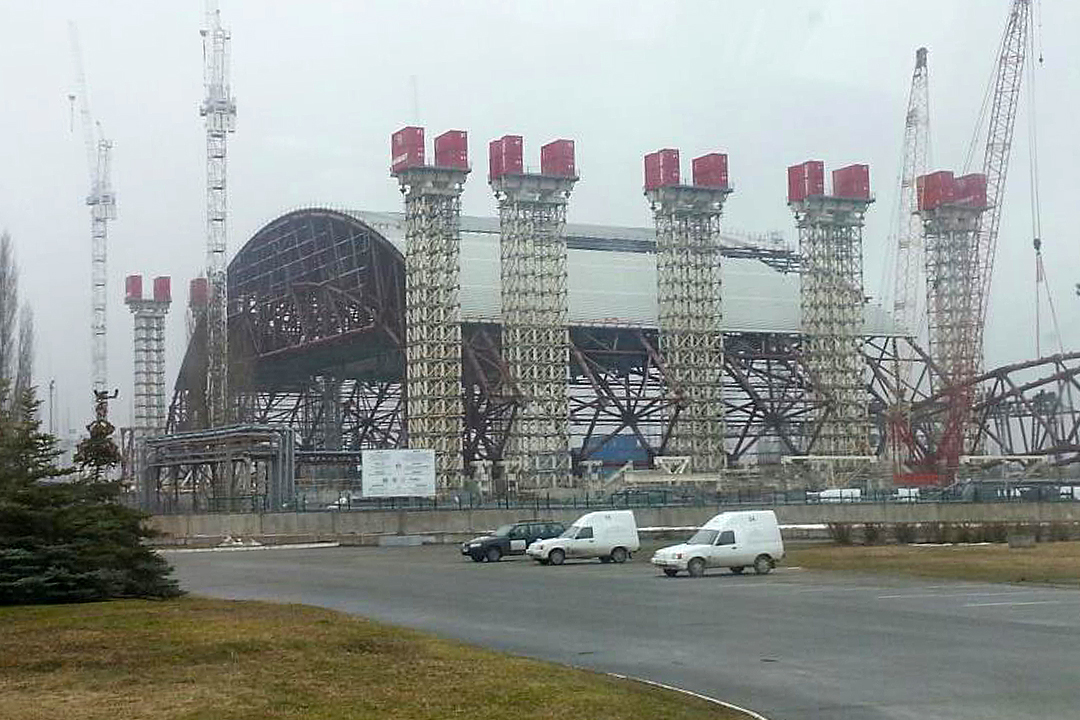
Above: Welcome to Chernobyl | Reactor No 4 | The lads posing by the monument | The cover being constructed to cover the reactor – photography forbidden
The next part of the tour takes us to the famous city of Pripyat, only 3km away from the powerplant, this is the post card image of anything to do with Chernobyl. Pripyat was a new city created in 1970 to accommodate the workers at nearby power plant away. Priypat’s population grow to almost 50,000 before evocation, but now is compleatly abandoned and overridden by vegetation. At the time it was one of the most wealthiest towns in the USSR, young couples had many luxuries of the time, and they say more of the population were expecting babies then not. Indeed it was a shining example how the socialist dream was meant to be. This all came to an abrupt end when four days after reactor 4 blew when all inhabitants were ordered to evacuate. Amazingly this was accomplished within two days, they were told this was a temporary relocation, it wasn’t.

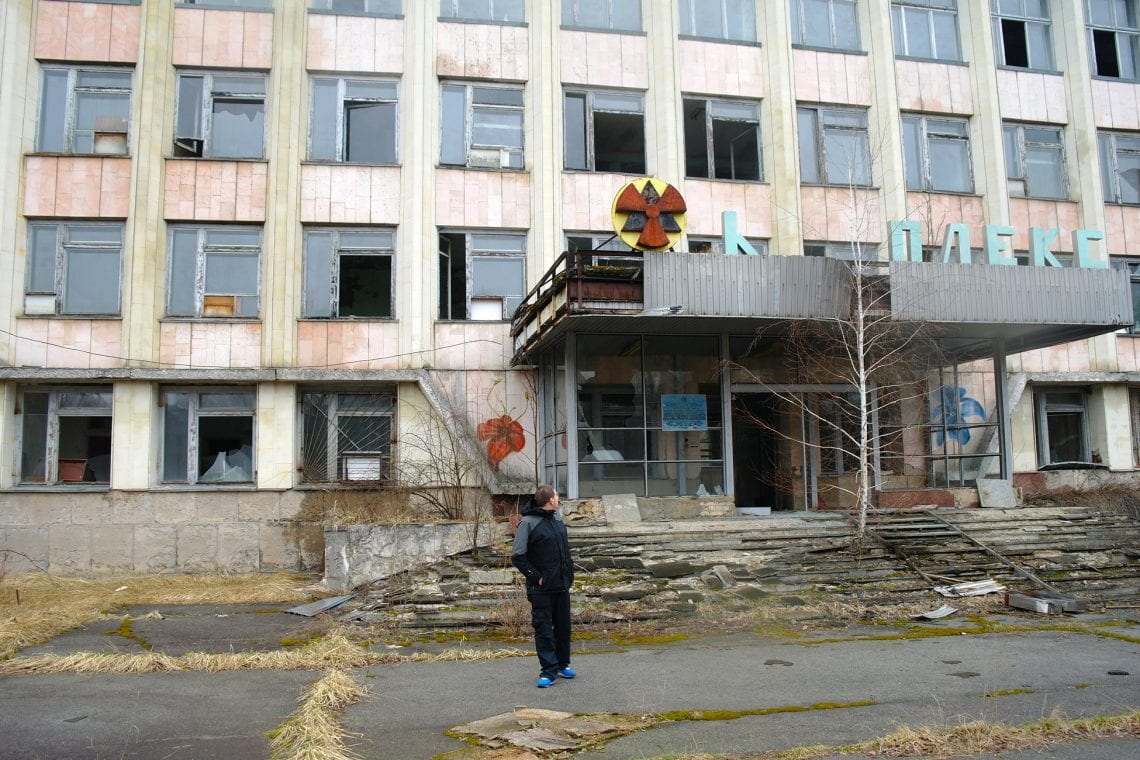
Above: Exploring abandoned Pripyat – the city wear most the workers lived
Now that the radioactive dust as settled limited tourisms like ours is allowed. We spend an hour walking the streets, see the famous amusement park which never opened, its Ferris wheel standing unused for 27 years. The town is completely overgrown, with humans no longer in the picture trees have broken through the concrete and now stand high above. We’re told Spring and Autum is a good time to visit as in the summer the excess vegetation make it hard to see all the buildings. The buildings are all out of bounds but we are given permission to enter the derelict sports center housing a multi-storey gym and swimming pool.
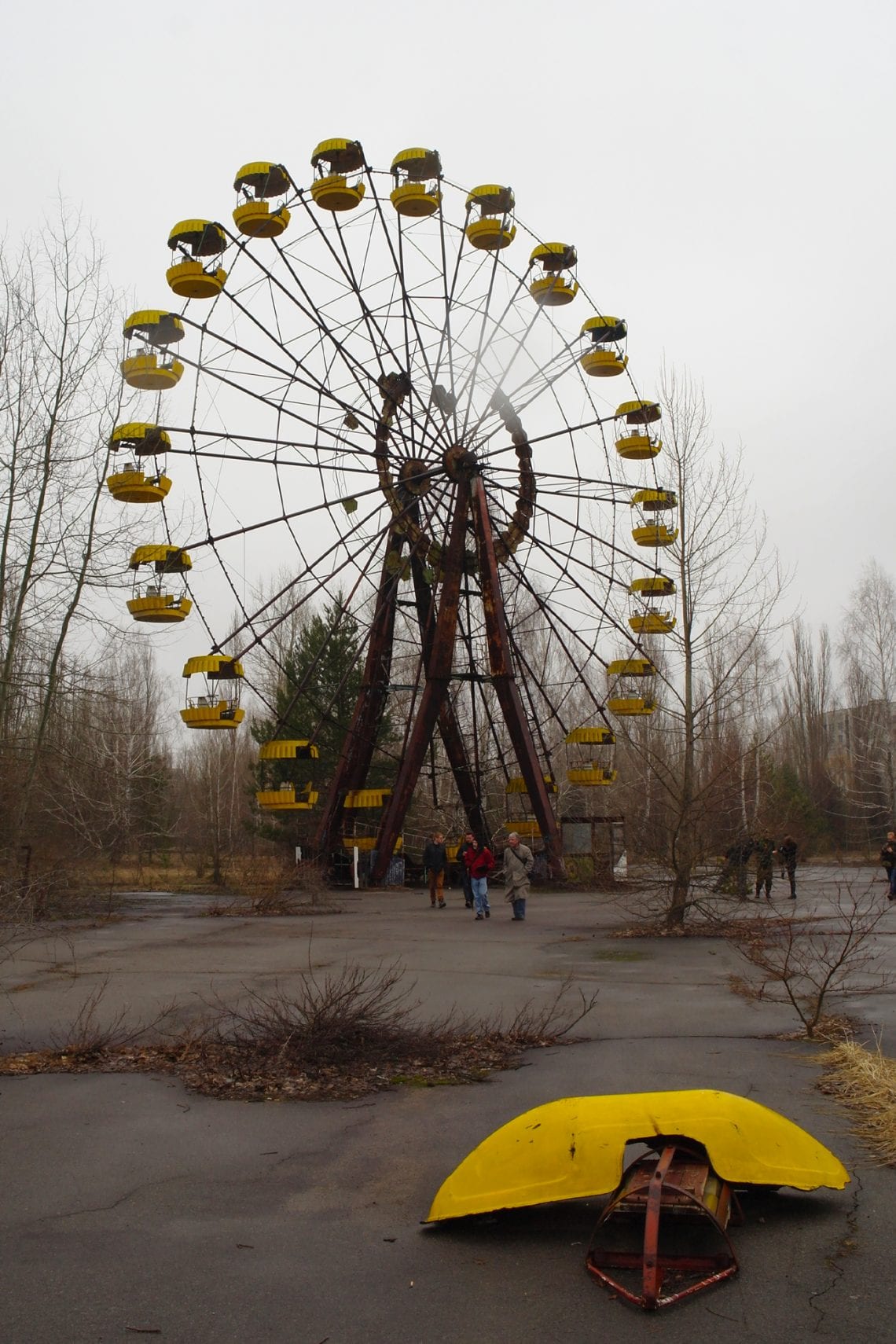
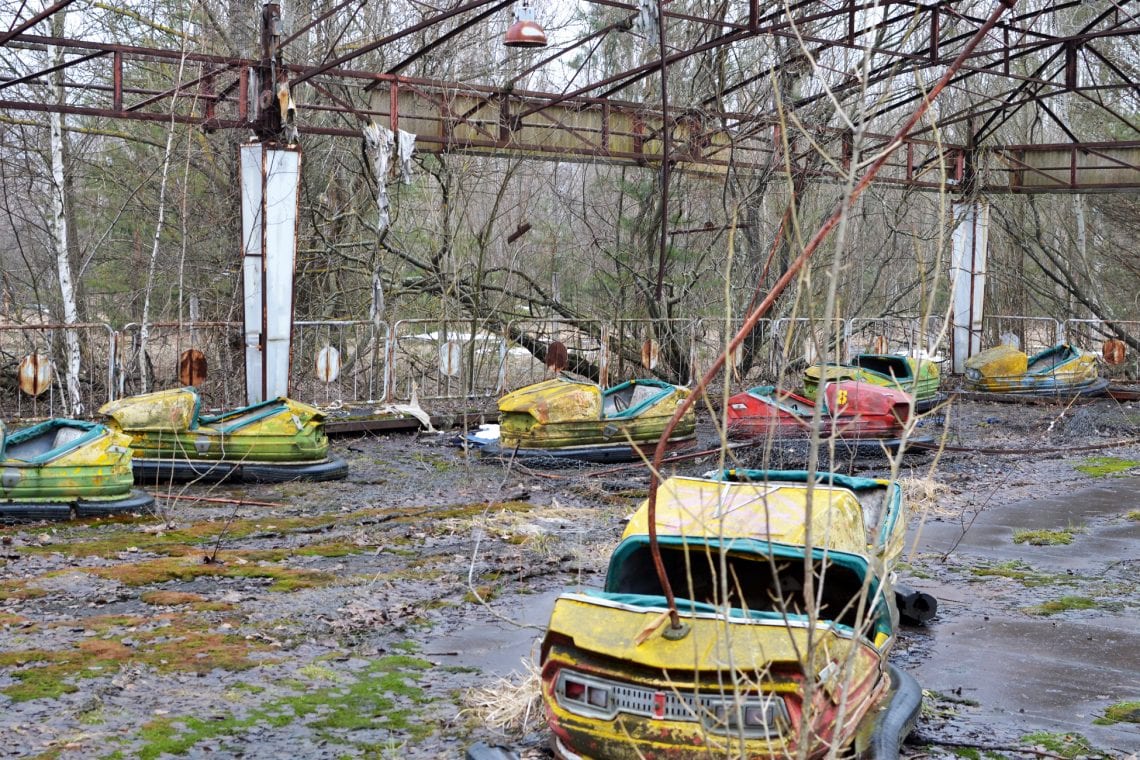


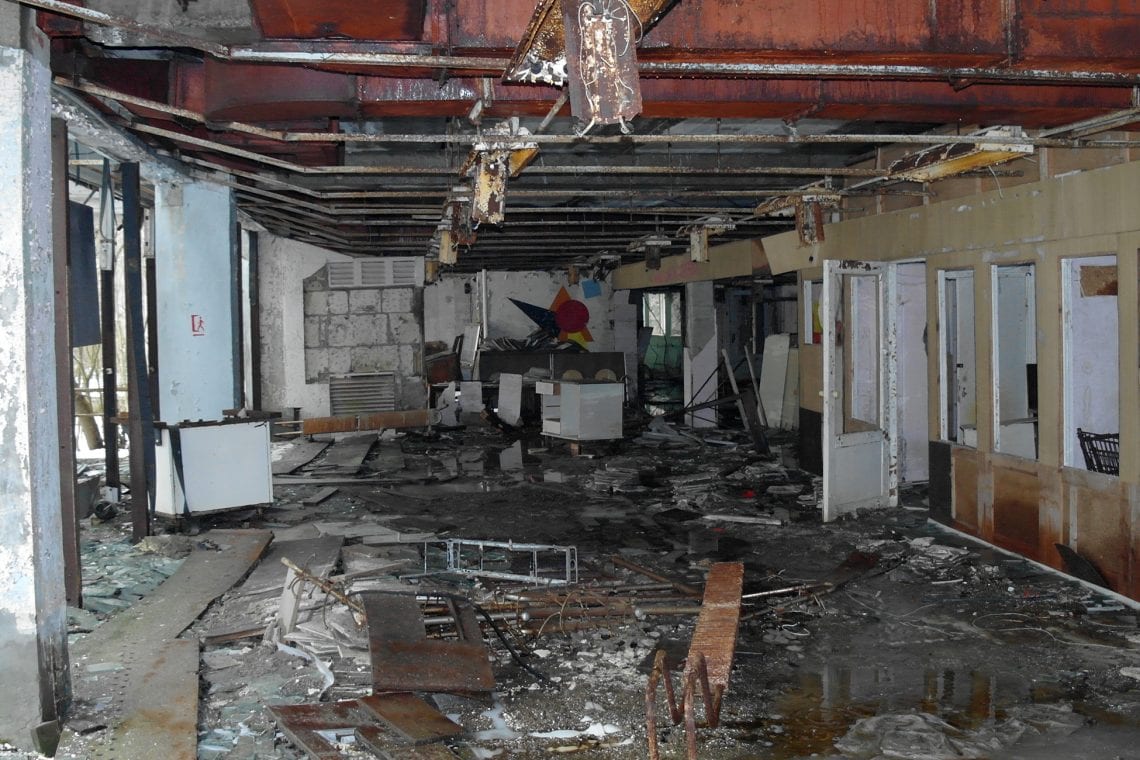
Above: Walking among the abandoned fair ground | Certain buildings like the leisure centre are stable enough for us to explor
This is our last stop before we board our bus and finally leave the 10km exclusion zone and head back to the town of Chernobyl for a much anticipated lunch (at 3pm) in the towns cantina. Lunch is interesting but I suppose we’re a bit spoilt and do our best to clear our plates.
Our final Chernobyl experience will be passing through a radio activity detector to ensure we’ve not picked up a dose of radiation while on our visit. We place our hands on the metal plate and wait for a green light to flash indicated we are fine to proceed out the exclusion zone and back to normality. Visiting Chernobyl has been an incredibly sobering experience, we’ve all heard about it but actually being there and seeing the gigantius area affected really has a profound effect. The tour has been very educational, we’ve learnt about the attempted government cover ups, the ecological fallout, about the people effected and the hero’s that fell to save Euroupe, something we should all be thankful for.
WHERE TO STAY
You will most likely be visiting from Kiev, where you can find accommodation to suit your budget. We stayed Dream Hostel Kiev.
USEFUL LINKS
- We booked our tour with www.tourkiev.com
- This film gives a great exploration of what happened: The battle for Chernobyl




